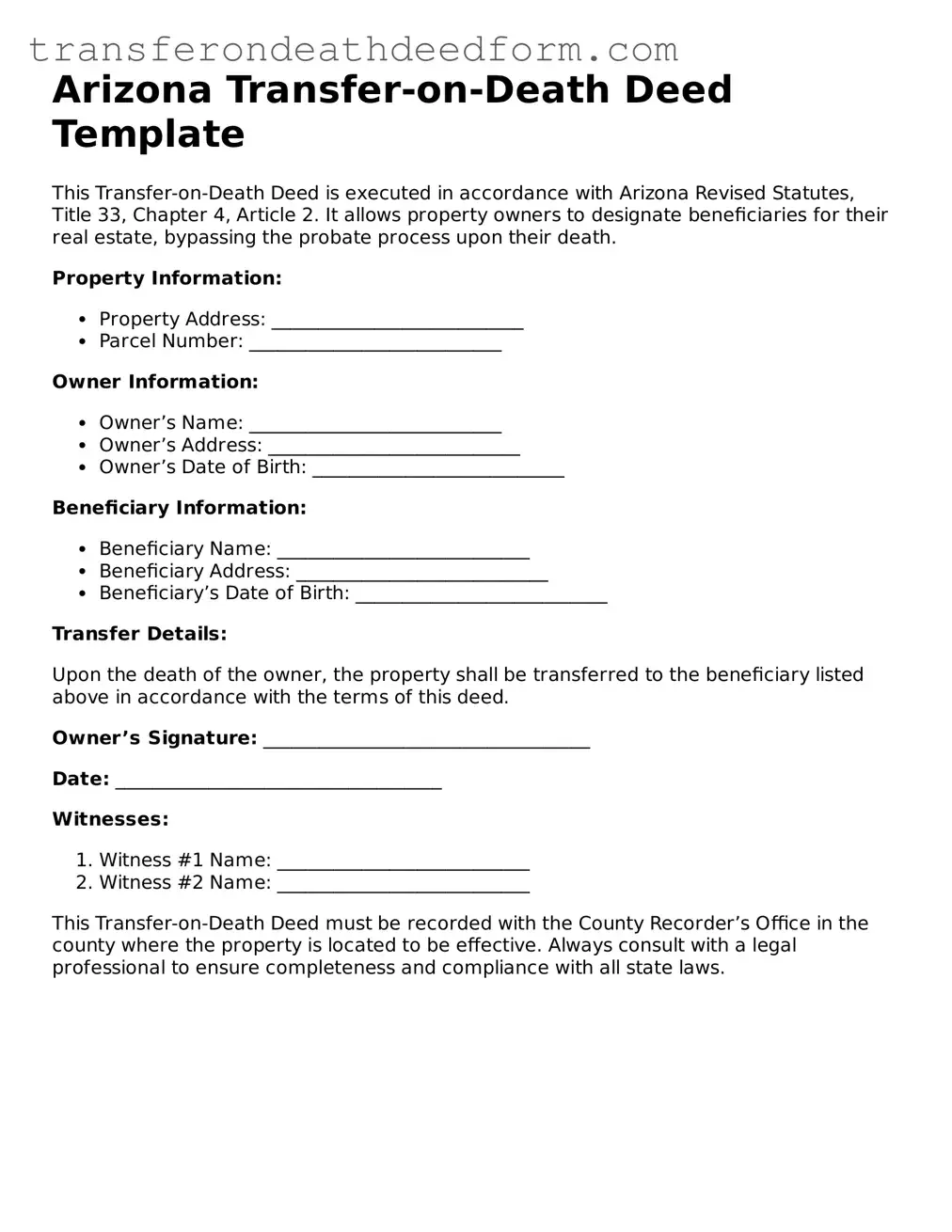Arizona Transfer-on-Death Deed Template
This Transfer-on-Death Deed is executed in accordance with Arizona Revised Statutes, Title 33, Chapter 4, Article 2. It allows property owners to designate beneficiaries for their real estate, bypassing the probate process upon their death.
Property Information:
- Property Address: ___________________________
- Parcel Number: ___________________________
Owner Information:
- Owner’s Name: ___________________________
- Owner’s Address: ___________________________
- Owner’s Date of Birth: ___________________________
Beneficiary Information:
- Beneficiary Name: ___________________________
- Beneficiary Address: ___________________________
- Beneficiary’s Date of Birth: ___________________________
Transfer Details:
Upon the death of the owner, the property shall be transferred to the beneficiary listed above in accordance with the terms of this deed.
Owner’s Signature: ___________________________________
Date: ___________________________________
Witnesses:
- Witness #1 Name: ___________________________
- Witness #2 Name: ___________________________
This Transfer-on-Death Deed must be recorded with the County Recorder’s Office in the county where the property is located to be effective. Always consult with a legal professional to ensure completeness and compliance with all state laws.
